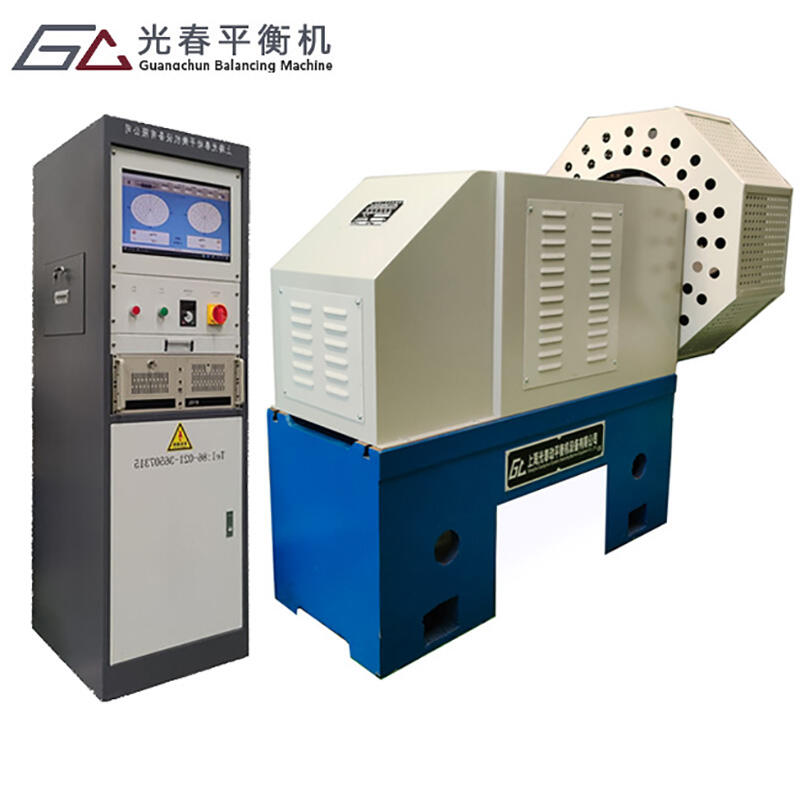Cost vs Quality: Fanblade Balancing Machines Compared
In the industrial manufacturing sector, the precision and efficiency of fanblade balancing machines play a crucial role in ensuring optimal performance of rotating equipment. These sophisticated devices represent a significant investment for manufacturers, making it essential to understand the relationship between cost and quality when selecting the right equipment for your operations.

Understanding Modern Fanblade Balancing Technology
Core Components and Functionality
Modern fanblade balancing machines incorporate advanced sensors and precise measurement systems to detect even minimal imbalances. These systems typically include vibration sensors, digital displays, and automated correction mechanisms that work together to ensure perfect balance in industrial fan assemblies.
Technological Advancements
Recent developments in fanblade balancing machines have introduced features like real-time monitoring, automated data logging, and predictive maintenance capabilities. These innovations help operators maintain consistent quality while reducing operational downtime and maintenance costs.
Investment Considerations for Manufacturing Facilities
Initial Purchase Costs
When evaluating fanblade balancing machines, manufacturers must consider both immediate and long-term financial implications. Entry-level machines may cost less initially but could lead to higher operational expenses over time. Premium models typically offer enhanced precision, durability, and advanced features that justify their higher price point.
Operational Cost Analysis
The total cost of ownership for fanblade balancing machines extends beyond the purchase price. Factors such as energy consumption, maintenance requirements, and operator training all contribute to the overall operational expenses. Higher-quality machines often demonstrate superior energy efficiency and require less frequent maintenance.
Quality Impact on Production Efficiency
Precision and Accuracy Benefits
Superior fanblade balancing machines deliver consistent, high-precision results that directly influence product quality. This precision translates to reduced vibration, extended equipment life, and improved energy efficiency in the final assembled products.
Production Speed and Output
Advanced balancing machines can significantly impact production throughput. Modern systems with automated features can process more units per hour while maintaining exceptional accuracy, making them valuable assets for high-volume manufacturing operations.
Maintenance and Longevity Factors
Regular Maintenance Requirements
Quality fanblade balancing machines demand systematic maintenance schedules to ensure optimal performance. Regular calibration, sensor cleaning, and component inspection are essential practices that preserve accuracy and extend equipment lifespan.
Long-term Reliability
Investment in premium fanblade balancing machines often results in superior durability and reliability. These machines typically incorporate robust construction materials and advanced protection systems that guard against wear and environmental factors.
FAQ
What determines the cost of fanblade balancing machines?
The cost is influenced by factors including measurement precision, automation capabilities, maximum workpiece size capacity, and additional features such as data logging and analysis tools. Manufacturing origin and brand reputation also impact pricing.
How often should balancing machines be calibrated?
Professional fanblade balancing machines typically require calibration every 6-12 months, depending on usage intensity and environmental conditions. Regular calibration ensures continued accuracy and reliable performance.
What is the expected return on investment for premium balancing equipment?
While premium fanblade balancing machines require higher initial investment, they typically deliver ROI within 2-3 years through improved efficiency, reduced downtime, lower maintenance costs, and enhanced product quality.




